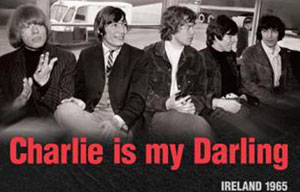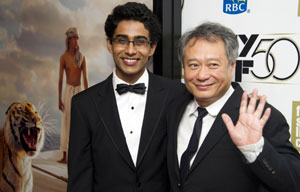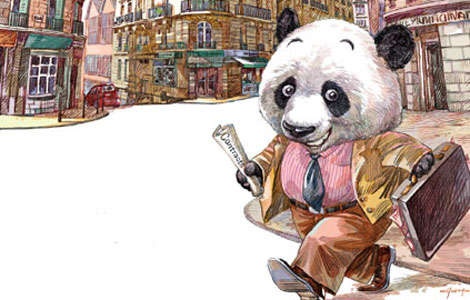Focusing on the blur
Updated: 2013-09-15 07:34
By Zhang Lei (China Daily)
|
||||||||
|
Sabrina Merolla's work aims to combine photography and anthropology in her blurred pictures. Photos Provided to China Daily |
An Italian photographer finds fuzziest visions are the sharpest. Zhang Lei reports.
Sabrina Merolla is enthralled by the images that flit past her eyes every day in Beijing. Through her camera lens, those seemingly transient scenes of everyday life take on a more permanent nature.
The 36-year-old Italian has been a photographer for 11 years and regards her love for taking such pictures not just as a release from the pace of modern life but also as an opportunity to reconnect with reality and the life within. Merolla has been keeping track of the daily sights and sounds of the Chinese world by using what she calls the snapshot style.
"The trick of photography is to keep sights fresh," she says.
At times, Merolla holds a small black-and-white photography exhibition at a local bar in Beijing. Her pictures are images of what many might have taken for granted, such as one of a grandmother and her grandson.
She says contrast is a key to her works.
"What I like to observe daily in this country and any other country is contrast," she says.
"Completely different kinds of life, attitudes and views confront me all the time. People you meet daily in the subway and the street have different behaviors. Some are really educated, polite - and some are not. What I like to find in my pictures is your own way of harmony, the kind of mixed differences."
Merolla believes there should be no distance between her snapshots and those who look at them, but her vision of reality can be somewhat blurred.
"I want my pictures to be more sensational. I don't want clear, refined ones, because reality to me is not that way. So I try every way to make it blur."
That method means there are some who do not appreciate her work. Some like a very clear attitude toward reality, she says, but she sees life differently.
"I think my method is greatly influenced by Taoism," she says.
"Everything changes. But in some way everything can be put together and made into harmony. So I just put all these elements through my camera between yin and yang."
In 2011 she won a prize in a Focus on China photography competition organized by Creative Commons, a California-based nonprofit group devoted to expanding the range of creative works available for others to legally use and share without charge.
"Every place has a history behind it, and every person has his own story," Merolla says.
"My work is to resonate with what is hidden in them."
Merolla says she picks up scattered dramas and forms a narrative in her pictures.
For her black-and-white Roads series, she traveled in China's urban and rural regions, looking at daily life and traditions in pursuit of personal spiritual release. She regards every picture as posing a question about modern reality. All the snapshots were captured either on the street, outside windows or in high-speed trains. They work like a silent movie - a dream-like recollection of her vision of the world.
"I use different filters in different shootings and sessions, and put them together," she says.
"Sometimes I like to take pictures through glasses. Much of my photography is cinematic. In films, when the camera moves, everything blurs, and I use the same method in my pictures.
"Sometimes when I take a picture of a profile, I ask the person to move his hand slowly, and give him time to move in slow motion. The slow timing is better for me to capture what I want."

 Victoria Beckham S/S 2014 presented during NYFW
Victoria Beckham S/S 2014 presented during NYFW
 'Despicable' minions upset Depp's 'Lone Ranger' at box office
'Despicable' minions upset Depp's 'Lone Ranger' at box office
 'Taken 2' grabs movie box office crown
'Taken 2' grabs movie box office crown
 Rihanna's 'Diamonds' tops UK pop chart
Rihanna's 'Diamonds' tops UK pop chart
 Fans get look at vintage Rolling Stones
Fans get look at vintage Rolling Stones
 Celebrities attend Power of Women event
Celebrities attend Power of Women event
 Ang Lee breaks 'every rule' to make unlikely new Life of Pi film
Ang Lee breaks 'every rule' to make unlikely new Life of Pi film
 Rihanna almost thrown out of nightclub
Rihanna almost thrown out of nightclub
Most Viewed
Editor's Picks

|

|

|

|

|

|
Today's Top News
Palace: Prince William ends active military career
Japan launches rocket Epsilon from Kagoshima
Chinese Kungfu kicks off New York Mets
US, Russia agree on Syrian chemical weapons
Senior Party official stresses ecological progress
Hundreds missing in Colorado floods
Interest rate liberalization on way
China's top political advisor meets Vanuatu PM
US Weekly

|

|









